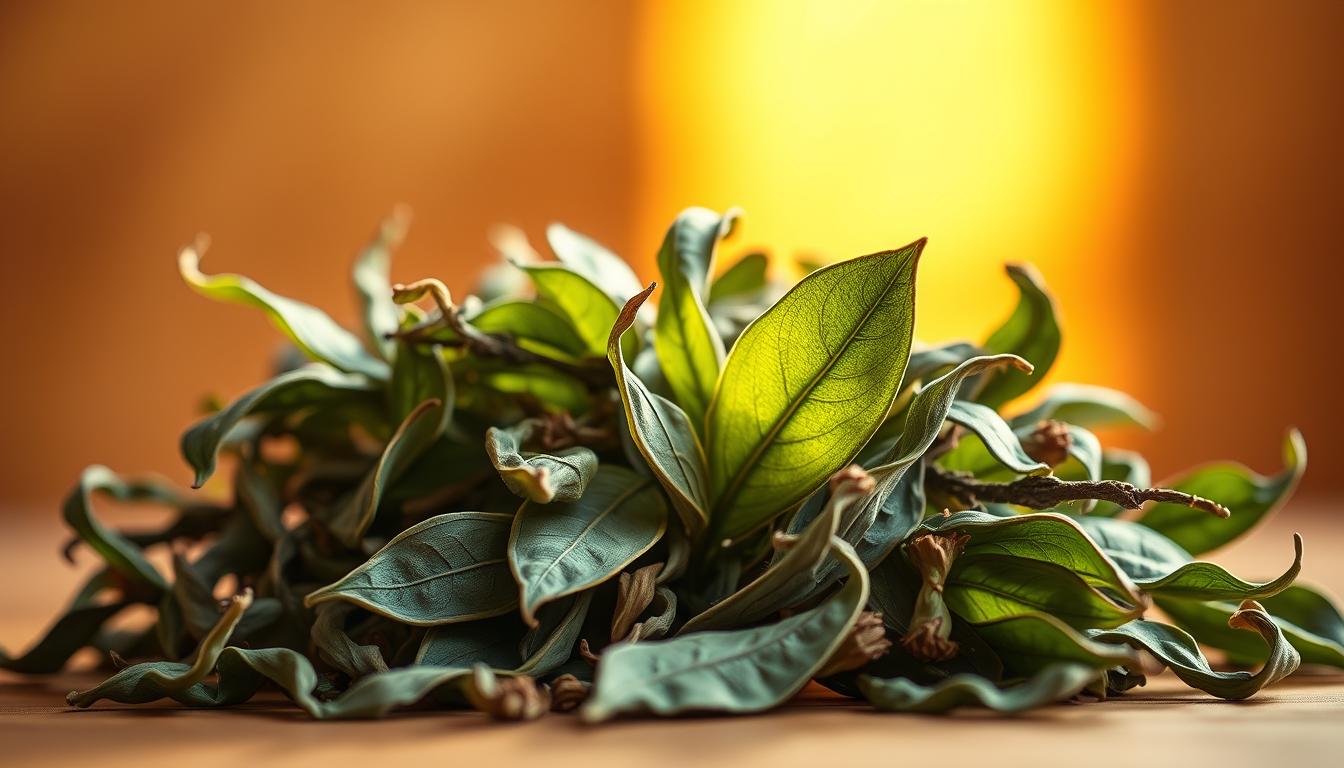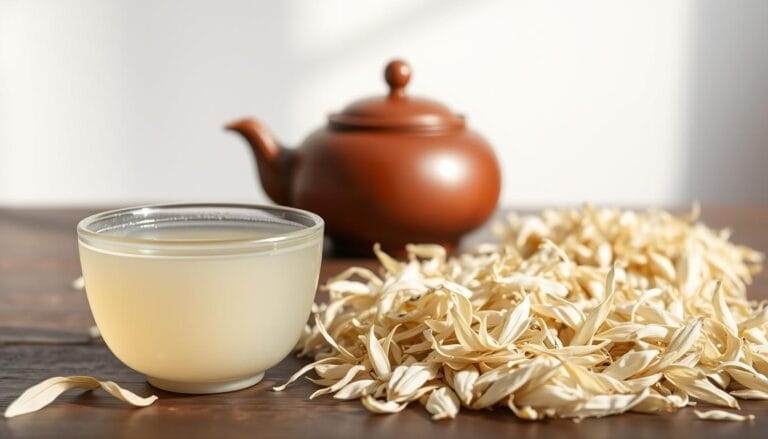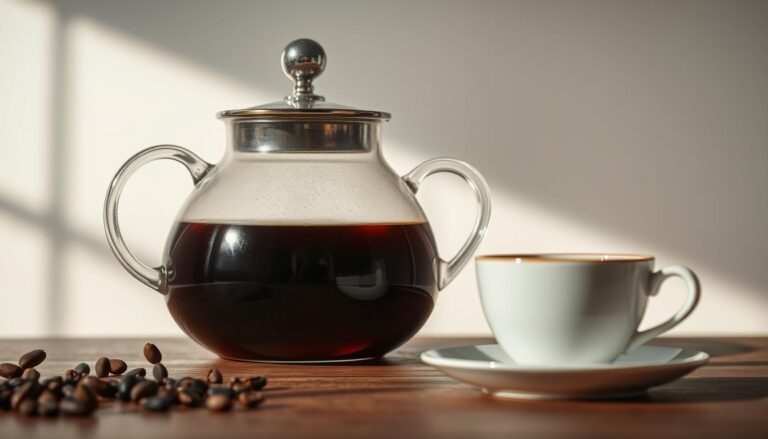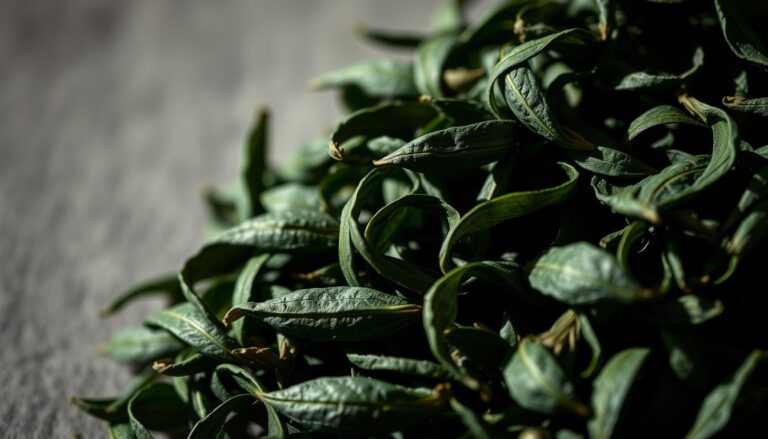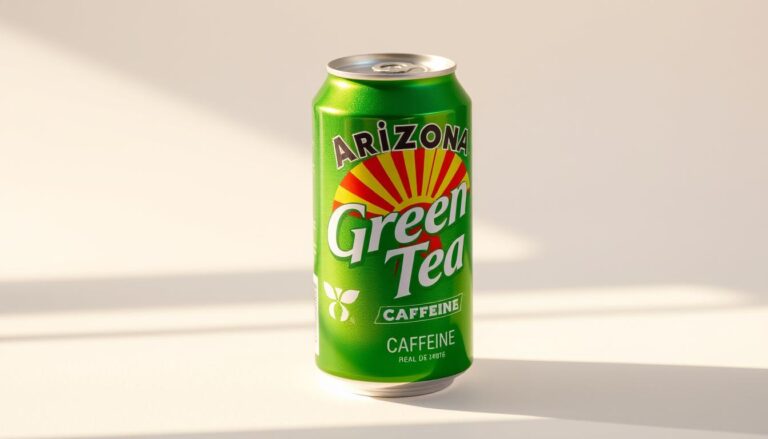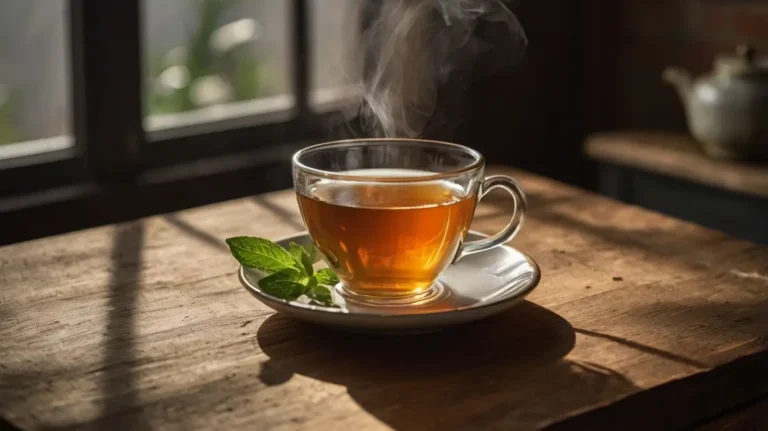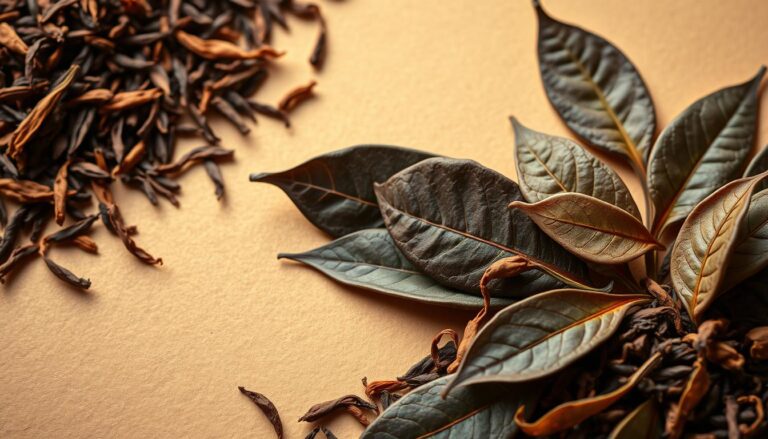Oolong Tea Caffeine: 5 Surprising Facts You Should Know
Ever craved a warm drink that’s both comforting and energizing? My adventure with oolong tea started on a cool autumn morning. I was looking for something new, beyond my usual coffee. That first sip opened a world of flavors I never saw coming from a semi-oxidized tea.
Oolong tea is more than just a drink; it’s a mix of tradition and science. Made from the Camellia sinensis plant, it falls between green and black teas in oxidation. You’re about to learn five surprising facts about oolong tea caffeine that will change how you see this special tea.
If you love tea or just want to know more about caffeine, this journey into oolong tea will surprise you. It’s packed with knowledge that goes beyond what you’d expect from a simple drink.
What is Oolong Tea?
Oolong tea is a special type of traditional Chinese tea. It’s a mix between green and black tea, with a unique taste and complexity. This comes from the careful control of tea oxidation levels during making.
Oolong tea is made with a special process. It comes from China’s misty mountains and has a long history. The tea’s flavor is unique because of partial oxidation.
Origin and Cultural Significance
Oolong tea started in China’s Fujian province. Tea masters created it to blend green and black tea qualities. The name “oolong” means “black dragon” in Chinese, because of its dark leaves.
Varieties of Oolong Tea
Oolong tea comes in many varieties, each with its own taste. Here are some favorites:
- TieGuanyin: A premium variety from Fujian province
- Minnan Narcissus: Known for its smooth, delicate flavor
- Dongding Oolong: A Taiwanese tea with rich, roasted notes
- Wuyi Rock Tea: Grown in the rocky terrain of Fujian
| Oolong Variety | Origin | Oxidation Level | Flavor Profile |
|---|---|---|---|
| TieGuanyin | Fujian, China | 40-50% | Floral, light |
| Minnan Narcissus | Fujian, China | 30-40% | Delicate, smooth |
| Dongding Oolong | Taiwan | 50-60% | Roasted, rich |
| Wuyi Rock Tea | Fujian, China | 60-70% | Bold, mineral |
Each oolong variety has its own story. It’s a journey of flavors for tea lovers and beginners alike.
How Oolong Tea Compares to Other Teas
Oolong tea is special in the world of tea. Its unique flavor and caffeine level come from how it’s made. If you want a drink with less caffeine, oolong tea is a good choice.
Caffeine Levels in Different Teas
Knowing how much caffeine is in different teas helps you pick the right one. Here’s a quick look at caffeine levels:
- Black Tea: Highest caffeine content (around 47 mg per cup)
- Oolong Tea: Moderate caffeine (approximately 37 mg per cup)
- Green Tea: Lower caffeine (about 29 mg per cup)
- White Tea: Lowest caffeine (roughly 25 mg per cup)
Unique Health Benefits of Oolong Tea
Oolong tea is more than just a drink with balanced caffeine. Its making process keeps in many health benefits.
- Metabolism Boost: Supports weight management efforts
- Antioxidant Rich: Helps combat free radicals
- Heart Health: May improve cardiovascular function
- Mental Clarity: Provides gentle stimulation without excessive caffeine
Oolong tea represents a perfect balance between flavor, caffeine content, and potential health benefits.
Choosing oolong tea means picking a drink that does more than just quench your thirst. Its special making and moderate caffeine make it great for those looking for a flavorful, low-caffeine drink with health perks.
Understanding Oolong Tea Caffeine
Oolong tea is special because of its flavor and health benefits. Caffeine is key in how it affects your body. It works with your nervous system in interesting ways.
Drinking oolong tea starts a complex process in your body. Caffeine and tea polyphenols together give you a unique energy boost. This is different from other caffeinated drinks.
How Caffeine Impacts Your Nervous System
Caffeine affects your brain in several important ways:
- Blocks adenosine receptors, reducing fatigue
- Stimulates release of neurotransmitters
- Increases mental alertness
- Enhances cognitive function
Factors Affecting Caffeine Content
Not all oolong teas have the same amount of caffeine. Several things affect how much caffeine is in the tea:
| Factor | Impact on Caffeine |
|---|---|
| Leaf Age | Younger leaves contain more caffeine |
| Processing Method | Oxidation levels change caffeine concentration |
| Growing Conditions | Altitude and soil type affect caffeine content |
| Harvest Season | Spring leaves typically have higher caffeine |
Knowing these factors helps you pick the right oolong tea. The mix of caffeine and tea polyphenols makes oolong tea truly unique.
Brewing Oolong Tea for Optimal Flavor
Learning to brew oolong tea can change how you enjoy it. It brings out the tea’s unique flavors and health benefits. Whether you love tea or are new to it, knowing how to brew it right will make your experience better.
The way you brew oolong tea affects its taste and caffeine level. Your brewing method can greatly change how good your tea is.
Perfecting Your Brewing Technique
To get the best brew, follow these tips:
- Water Temperature: Aim for 180-200°F (82-93°C)
- Steeping Time: 1-5 minutes depending on desired intensity
- Tea Quantity: Use approximately 1 teaspoon per 8 ounces of water
Brewing Styles to Explore
Oolong tea can be brewed in different ways. Two common methods are:
- Gongfu Method: Traditional Chinese way using short steepings
- Western-Style Brewing: Longer steeping with more water
Pro tip: Try different brewing times to find your favorite flavor and caffeine level.
Keep in mind, each oolong tea is unique. You might need to adjust these guidelines based on your taste and the tea’s type.
The Role of Oolong Tea in Your Diet
Exploring healthy tea options can change your life. Oolong tea is a great choice for weight management and overall health. It’s a mix of green and black teas, making it a tasty way to get nutrients.
Oolong tea is low in caffeine but high in benefits. It helps your body in many ways:
- Boosts metabolism naturally
- Helps regulate blood sugar levels
- Supports fat oxidation
- Provides antioxidants without excessive caffeine
Understanding Oolong’s Weight Management Potential
Oolong tea has special properties that help your body. Polyphenols and a bit of caffeine can help burn calories. Studies show drinking 2-3 cups a day might help with weight loss.
Oolong tea isn’t a quick fix, but it’s part of a healthy lifestyle. Pair it with good food and exercise for the best results. Losing weight is about making healthy choices all the time.
Oolong tea: A delicious companion in your wellness journey
Adding oolong tea to your day can support your health goals. Its taste and benefits make it a better choice than sugary drinks.
Addressing Caffeine Sensitivity
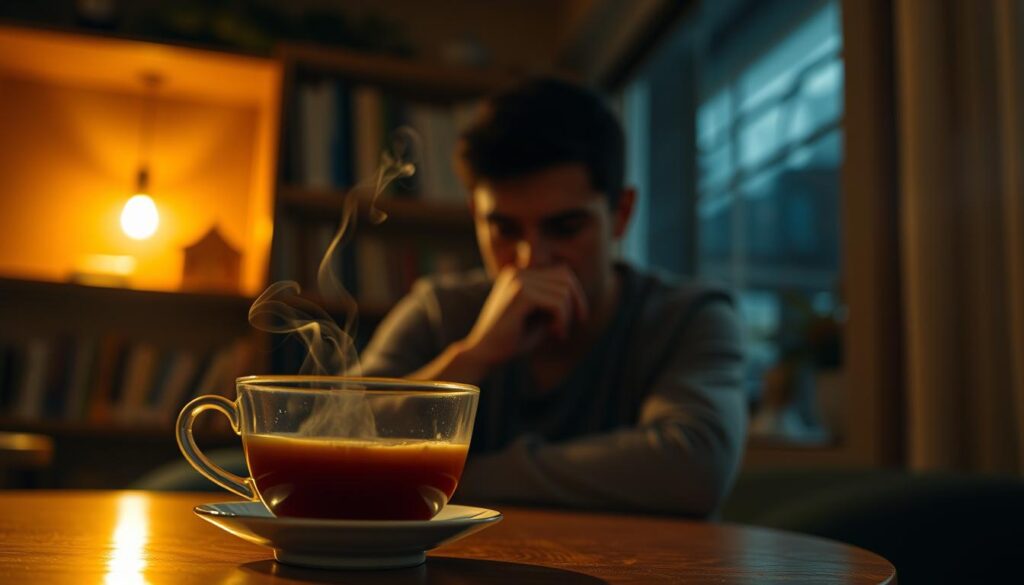

Caffeine sensitivity varies from person to person. It can change how you feel about drinking tea. Knowing how your body reacts to caffeine can make enjoying oolong tea more comfortable.
Not everyone handles caffeine the same way. Some people get more upset by small amounts of caffeine. This can cause uncomfortable symptoms.
Symptoms of Caffeine Sensitivity
It’s important to know if you’re sensitive to caffeine. This helps you manage how much tea you drink. Common signs include:
- Increased anxiety or restlessness
- Rapid heartbeat
- Difficulty sleeping
- Digestive discomfort
- Headaches
Tips for Enjoying Oolong Tea with Ease
Even if you’re sensitive to caffeine, you can still enjoy oolong tea. Here are some tips:
- Choose low-caffeine beverages by selecting lighter oolong varieties
- Brew tea for shorter periods to reduce caffeine extraction
- Consider decaffeinated oolong tea options
- Drink tea earlier in the day to minimize sleep disruptions
Pro tip: Oolong tea has L-theanine, which can balance out caffeine. This might help reduce jitters and make you feel calm and alert.
Remember, everyone’s caffeine tolerance is unique. Listen to your body and adjust your tea consumption accordingly.
When to Drink Oolong Tea
Discovering the perfect moments to enjoy oolong tea can change your daily routine. Knowing how caffeine works helps you get the most out of this amazing drink all day long.
Strategic Tea Consumption Times
Oolong tea has special benefits at different times. Choosing the right time to drink it can boost your energy and health.
- Morning: Boost cognitive function and mental alertness
- Mid-afternoon: Overcome energy slumps without heavy caffeine crash
- Pre-workout: Enhance metabolism and physical performance
Navigating Sleep and Oolong Tea
Oolong tea has L-theanine, an amino acid that relaxes you. This special compound helps manage caffeine and might even improve sleep.
Drink oolong tea at least 3-4 hours before bedtime to avoid sleep problems.
The tea’s gentle caffeine and L-theanine can help you sleep better. Your body will thank you for this balanced way to relax in the evening.
Safety Considerations
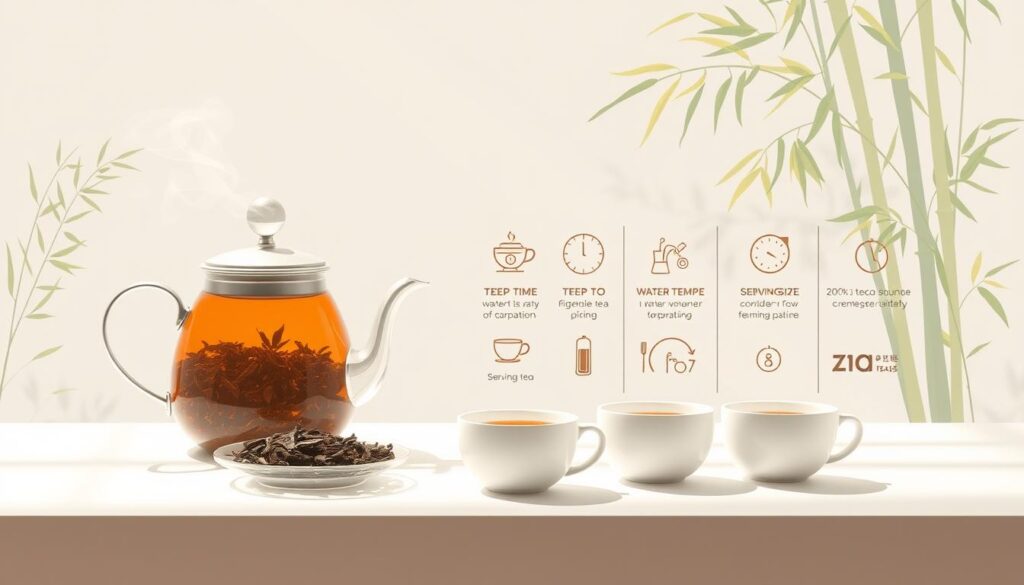

Oolong tea has many health benefits, but knowing its side effects is key to safe drinking. Enjoying this tea should always be about your health and not overdoing it.
Drinking oolong tea comes with some important safety considerations. The caffeine can affect people differently. It’s crucial to know the potential risks.
Potential Side Effects to Consider
- Caffeine-related sleep disruptions
- Potential interactions with certain medications
- Digestive system sensitivity
- Possible mineral absorption interference
Special Population Considerations
Certain groups need to be especially cautious about oolong tea consumption:
| Population Group | Recommended Approach |
|---|---|
| Pregnant Women | Limit to 3 cups daily due to caffeine concerns |
| Individuals with Caffeine Sensitivity | Consult healthcare provider before regular consumption |
| People with Heart Conditions | Monitor caffeine intake carefully |
Managing Potential Risks
To minimize potential side effects, consider these strategies:
- Start with small quantities of oolong tea
- Pay attention to your body’s response
- Choose lower caffeine content varieties
- Avoid consuming tea close to bedtime
Remember, individual responses to caffeine content can vary widely. Always listen to your body and consult with a healthcare professional if you have specific concerns about incorporating oolong tea into your diet.
Conclusion: Enjoying Oolong Tea Mindfully
Oolong tea is a journey of flavors and wellness. It’s a semi-oxidized tea that mixes the best of green and black teas. This makes it a special drink that helps you stay healthy.
Adding oolong tea to your life is easy. Choose high-quality loose-leaf tea that you like. Try different ways to brew it to find your favorite. Enjoy it in the morning or as a mid-day boost.
But remember, too much caffeine is not good. Pay attention to how your body reacts. Enjoying oolong tea can open up a world of taste and health benefits for you.
Creating Your Personal Tea Ritual
Make oolong tea a special part of your day. Take time to enjoy each sip. It’s a great way to relax, focus, and take care of yourself.

